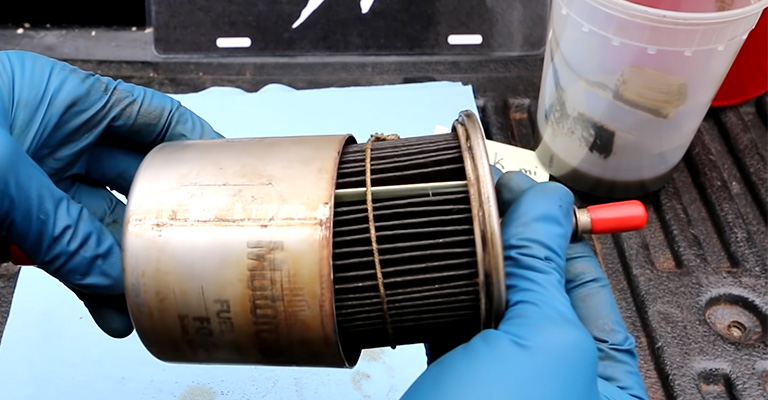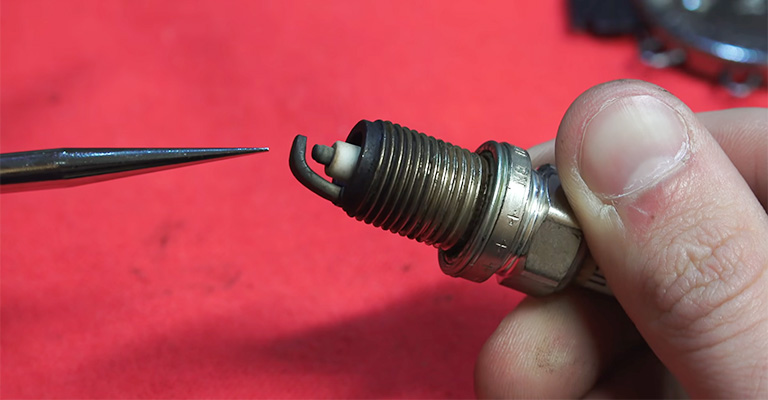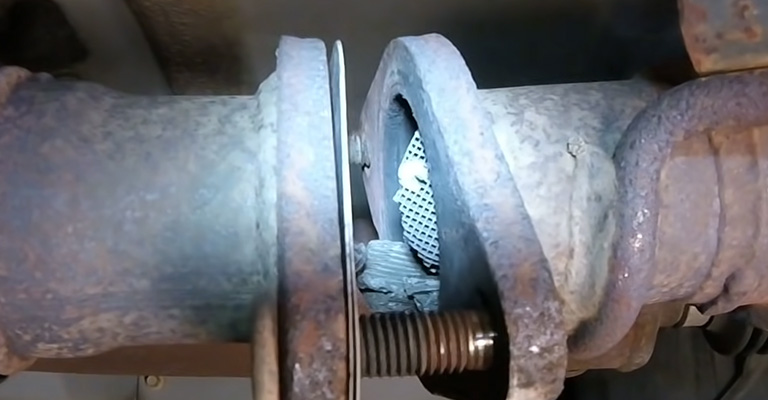The Honda Pilot is a popular mid-size SUV known for its reliability and practicality. However, some owners have reported experiencing hesitation when accelerating, which can be frustrating and concerning.
Hesitation in a Honda Pilot’s acceleration is a common issue that can arise for several reasons. One of the primary culprits is a faulty sensor, such as a mass airflow sensor, throttle position sensor, or oxygen sensor.
These sensors play a crucial role in regulating the fuel-to-air ratio; if they malfunction, the engine may not receive the correct information to operate smoothly. Another potential cause is clogged or dirty air filters, which can restrict airflow and lead to poor acceleration.
Transmission issues can also cause hesitation, such as slipping gears or a malfunctioning torque converter. In some cases, a simple fix such as replacing a sensor or cleaning an air filter can resolve the issue, but more significant problems may require professional diagnostics and repair.
Understanding the potential causes of hesitation in a Honda Pilot’s acceleration can help owners take the necessary steps to keep their vehicle running smoothly and avoid more severe issues down the line.

What Causes Honda Pilot Hesitation When Accelerating?
Experiencing hesitant acceleration from your vehicle when you expect a certain acceleration from it can be frustrating for any driver.
A situation in which acceleration may be necessary to merge with traffic, such as when entering and exiting a highway from an off-ramp, may result in a dangerous hesitation.
The acceleration process of a vehicle that struggles or hesitates may be unpredictable, and moments of hesitation may be followed by surges or unexpected accelerations as well.
It’s recommended that a mechanic inspects a vehicle that hesitates during acceleration. Several factors can cause sluggish or delayed acceleration, including a dirty mass air flow sensor, a clogged fuel filter, or a defective spark plug.
An ignition system problem, fuel injector issue, or fuel pump malfunction could also be to blame. The sooner you have your car diagnosed and repaired, the better. If it hesitates when you accelerate, you should have it repaired as soon as possible.
Fuel Pump & Dirty Fuel Filter

A faulty fuel pump or a dirty fuel filter may cause hesitancy in your Honda Pilot when acceleration is attempted. Fuel pumps in modern vehicles are located within the fuel tanks and pump fuel to the engine. Fuel may have difficulty connecting to the engine if the pump cannot provide the correct pressure.
The clog in your fuel filter can inhibit fuel flow to your engine, causing hesitation. A weak fuel pump may cause a vehicle to hesitate when increasing speed or driving up a hill. If you need a replacement or maintenance on your fuel system, bring it to a mechanic.
Fuel Injectors
An injector sprays fuel into the cylinder in a fine mist, mixed with air, and ignited by a spark plug. Fuel injectors can become clogged over time and not be able to provide the cylinder with enough fuel.
You might have a problem with your Honda Pilot’s fuel injectors if your car hesitates when you press the accelerator. Fuel cannot be delivered properly to the engine if these components become clogged with deposits over time.
Dirty injectors may cause an engine to run lean, resulting in hesitation when accelerating. It can lead to a loss of power and acceleration. If you want to clean your fuel injectors, you must remove them and have them professionally cleaned.
Throttle Position Sensor

The throttle position sensor indicates to the vehicle’s computer how far the throttle is opened and how hard the accelerator is pressed. Using this information, the computer adjusts the fuel/air mixture to remain optimal for the engine.
Using a defective throttle position sensor may result in the vehicle’s computer receiving incorrect information. When the computer doesn’t provide the engine with the correct air supply while accelerating, hesitation can occur.
Clogged Air Filter
Dirty air filters in Honda Pilot engines degrade engine performance as less air passes through them, suffocating the engine. Additionally, fuel consumption is increased as a consequence of this.
An extremely clogged air filter can cause the engine to stall in the worst-case scenario. It takes just a few minutes and doesn’t require any special knowledge to replace the Pilot’s filter. You should therefore check this first.
Spark Plug Needs To Be Looked At

Several spark plugs in the Honda Pilot may be malfunctioning, which may cause the vehicle to hesitate when it accelerates. Make sure the spark plugs are in good condition and replace them if necessary. You should also double-check the connection of the wires.
Mass Airflow Sensor
During combustion, the mass airflow sensor measured how much air was entering the engine and relayed that information to the vehicle’s computer so that the correct amount of fuel could be injected.
Mass airflow sensors will typically generate an error code or “Check Engine” light when they begin to fail. This warning will accompany hesitation while trying to accelerate or driving uphill. In addition, a vehicle with a failing mass airflow sensor may stall shortly after starting.
Clogged Catalytic Converter

The catalytic converter in Honda Pilot produces byproducts that are less harmful to health and the environment. It is a part of the exhaust system, which converts harmful exhaust gasses into less harmful ones.
A catalytic converter gets clogged up over time by toxins, especially if the vehicle is old and abused.
How long does the catalytic converter last in Honda Pilot?
A Pilot’s catalytic converter typically lasts in the range of 70,000-100,000 miles, depending on many factors.
Other factors could cause the catalytic converter to fail much earlier, such as misfires in the engine, a bad air-fuel mixture, a faulty oxygen sensor, or a lack of coolant in the combustion chambers.
What Are The Signs Of A Bad Catalytic Converter In A Honda Pilot?
Symptoms of clogged catalytic converters in Pilot vehicles include:
- Irregular engine operation.
- Unusual exhaust gas odor.
- Poor fuel economy.
- Engine check light illumination.
- Performance loss above a specific speed.
- Rattling noises.
How A Mechanic Troubleshoots Honda Pilot Hesitation When Accelerating
Hesitating during acceleration indicates a problem with the vehicle, which a mechanic should check. As a result, here are the steps of the inspection:
Checking The Trouble Codes
It is crucial that a mechanic first plugs a code reader/scanner into your vehicle’s computer to give them a better idea of precisely what the problem is.
To ensure those numbers are correct, the technician should also be able to read trouble codes and monitor oxygen and fuel intake. If any potential issues are discovered, the mechanic can begin to fix them.
Mass Airflow Sensor Inspection
To detect any superficial damage to the mass airflow sensor, the mechanic will first examine it for bad or failing sensors.
Also, the mechanic will make sure the wire harness has not been damaged and that the sensor is wired correctly. Afterward, the mechanic should replace the mass airflow sensor if it needs replacing.
Checking The Fuel Pump
When the mechanic believes the fuel pump is the problem, the tank will be removed to inspect the pump. The mechanic will replace the pump if it is indeed defective. Pump and tank changes may be convenient together if the fuel tank shows signs of aging.
Throttle Position Sensor Inspection
The mechanic needs to test the throttle position sensor and its wiring if the sensor seems to be malfunctioning. When this is not the case, the mechanic will replace the throttle positioning sensor and the wiring.
When removing the old sensor and replacing it with the new one, the mechanic should clean the throttle body in between. Following that, the mechanic will ensure that the throttle positioning sensor is functioning properly and transmitting the correct information to the vehicle’s computer.
Fuel Injector Inspection
When the mechanic suspects dirty or failing fuel injectors are responsible for the problem, he or she checks those injectors for damage or leaks.
It is also advisable for the technician to replace the fuel filter if it is not part of the fuel pump. After the injectors are replaced, they will be tested to see if they are in good working order.
The mechanic will start the vehicle each time to ensure that all of the new components function correctly.
Using a reader/scanner, the mechanic can clear trouble codes associated with warning lights caused by issues.
Preventing Hesitation Or Bogging Down When Accelerating
If your Honda Pilot needs to accelerate more smoothly, you can do a few things.
- To begin with, check your air filter and make sure it’s clean. When your air filter is dirty, you may experience hesitations or bogging because your engine runs lean, restricting airflow.
- Check the condition of your spark plugs and ensure the gap is set correctly. It may cause hesitation and misfires if your spark plugs are fouled, or the gap is too wide.
- You should also make sure your fuel injectors are clean. You may experience a hesitation when your fuel injectors are dirty. This can cause your engine to run lean.
- The final thing you should do is to ensure that your vehicle’s mass air flow sensor is clean if it is equipped with one. Your engine can run lean if your mass air flow sensor is dirty, and you may also encounter hesitation.
- In addition, make sure your clutch is adjusted properly if you have a manual transmission. Haphazardness and bogging are symptoms of a slipping clutch.
These tips will help you prevent the Honda Pilot from stuttering or bogging down when you accelerate.
Final Words
The sluggish acceleration of a car can become irritating for drivers who expect more power from the vehicle, but it can also be hazardous under certain circumstances.
A hesitant engine can cause a collision, especially when merging into and out of heavy traffic, due to the unpredictable nature of its operation.
Some factors can cause Honda Pilot acceleration problems. In search of the cause, it is best to start with the most obvious ones, such as an air intake or fuel supply problem.

Leave a Reply